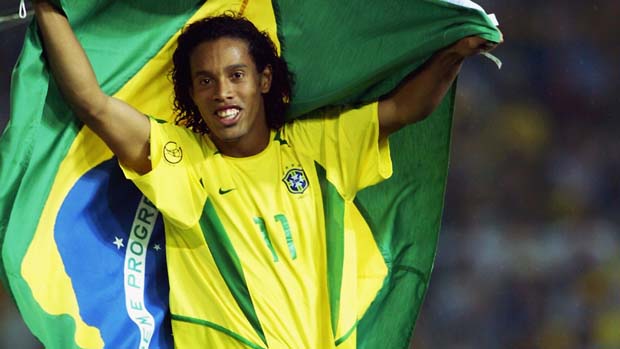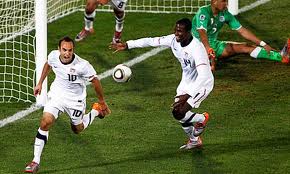|
So many players, so few roster spaces.
This is the enviable position of the once and future kings of soccer, as Brazil prepares to hold the 2014 World Cup. So blessed in talent is Brazil that it could afford to leave its old guard – Ronaldinho, Kaká and Robinho, with a total of 276 international matches -- off the 23-player roster when Brazil filed its list on Wednesday, well before deadline. Luiz Felipe Scolari did not feel the need to include a couple of the oldies for their vestigial wisdom, the muscle memory of how to win a World Cup game. Contrast this – and you knew where I was heading on this – with the United States, which is still dithering in the weeks before fail-safe time. Coach Jürgen Klinsmann was originally going to camp with only 23 players but now he has invited 30 players to the final training session before he has to commit. Prudent, admirable, pragmatic – and telling. Whereas Big Phil can stock up his front line with Bernard (Shakhtar Donetsk of Ukraine), Fred (Fluminense of Brazil), Hulk (Zenit Saint-Petersburg of Russia), Jo (Atletico Mineiro of Brazil), and Neymar (Barcelona of Spain), and say “Muito Obrigado” to the aforementioned elders, Klinsmann is taking a long, last look at his talent pool. This long lingering – poking at the tomatoes in the green- grocer’s display case – indicates Klinsmann is not comfortable with the backbone of the team that produced the epic 91st-minute goal against Algeria in the 2010 World Cup. The USA -- for all the Joshes and Jennifers and the pink pylons (one of my favorite rock groups, by the way) – has not produced the equivalent of a Neymar, going into his first World Cup with high expectations. It is fairly obvious that Klinsmann is hesitant to go with the relay team of Howard (his spot safe, one assumes) to Donovan to Altidore to Dempsey-the-Flying-Wallenda and back to Donovan, which, let us not forget, got the US through to the knockout round. However, Donovan has not scored a goal in his first six MLS games this season, and it seems that Klinsmann is still not sure about him since Donovan's brief forays in the Bundesliga. Meanwhile, Donovan is probably the best offensive player in USA history. And they need him. The flirtation with Julian Green, not yet 19, with almost no international experience, for a roster spot in 2014 is close to insulting to players still close to their prime, whatever that is. But Klinsmann knows his business, and he is not rushing to emulate Big Phil and commit to a roster for the upcoming mission, onward, onward, into the Group of Death. It is getting to be World Cup time, at any rate. Americans didn’t used to care about World Cup soccer rosters. Now they tweet second-guesses. This is known as progress. Your thoughts?
John McDermott
5/8/2014 07:50:20 am
Rearranging the deck chairs...and he knows it. Three and home.
Sgc
5/8/2014 11:58:11 am
So, apparently we're not as good as Brazil, and none of our players is as good as Neymar. Well, knock me over with a feather!
Andrew Tansey
5/15/2014 01:31:53 pm
Even the very party line USSF has a nicely candid Q&A with Klinsman about the selection process.
George Vecsey
5/17/2014 01:14:47 am
Oh, so your daughter is going. How lucky. I've never been. 5/28/2014 10:06:04 am
Exquisitely professional thoughts. I merely hit upon this web site and desired to enunciate that I've definitely delighted in reckoning your blog articles or blog posts. Rest assured I'll subsist pledging to your RSS and I wish you write-up after much more shortly))(( Comments are closed.
|
Categories
All
|











